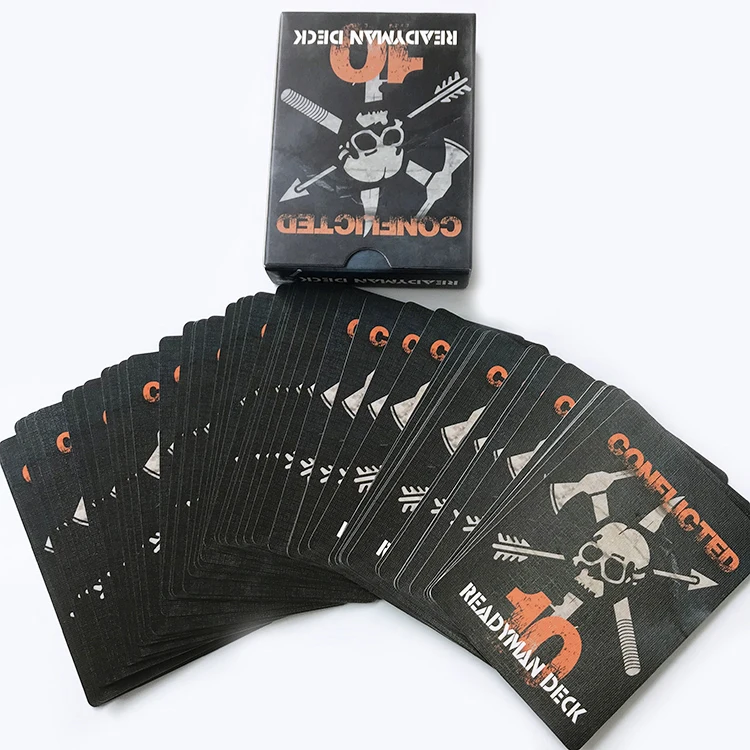

This resolution will dictate the way we build the HTML template for our cards. The important part is the resolution, which for the domino-sized deck is 597x1122. The next page provides the necessary dimensions, as well as a utility to bulk upload all the images or the card fronts. Once you pick the form factor and the various parameters for the printing, click “Start Design,” and choose custom image and text for all cards. In this example we will use the domino-sized deck.

Regardless of the printing service used, most will offer different dimensions for decks and the number of cards included in each deck. It has lots of options for different sizes, custom boxes, and even pamphlets that can be customized and included with each deck. A great service that I found was Make Playing. The first step in creating a custom card game (besides designing it of course) is to find a printing service as this will define the templates used for building the cards. Create a program to inject parameters into the template and script Google Chrome via the DevTools protocol to take a screenshot of the template output.Build an HTML + CSS template using a templating language (we will be using Liquid).Find the acceptable dimensions for a deck of cards on a printing service.In this tutorial we will also be using Golang as the language of choice in combination with the Liquid template engine, but any programming language and template engine can be used. Rather than designing each card by hand using a tool like Adobe Illustrator, Adobe Indesign, or Inkscape, I found that by using JSON, HTML templates, and headless Chrome, it was possible to quickly iterate on designs. When exploring the idea of creating a card game I went down different avenues of design and printing, and I believe I stumbled upon an approach that maximizes both quality and efficiency. However, this article isn’t about the concept of this game, so I will get back on track. The game could either be single player or collaborative, but would not necessarily have a “winner” or “path to success.” It would purely be designed to stoke the flames of creativity and ideation. The concept would involve generating lots of different prompts in the user story format, grouping them by industry and type, and releasing different packs of these cards following an “expansion pack” model.


 0 kommentar(er)
0 kommentar(er)
